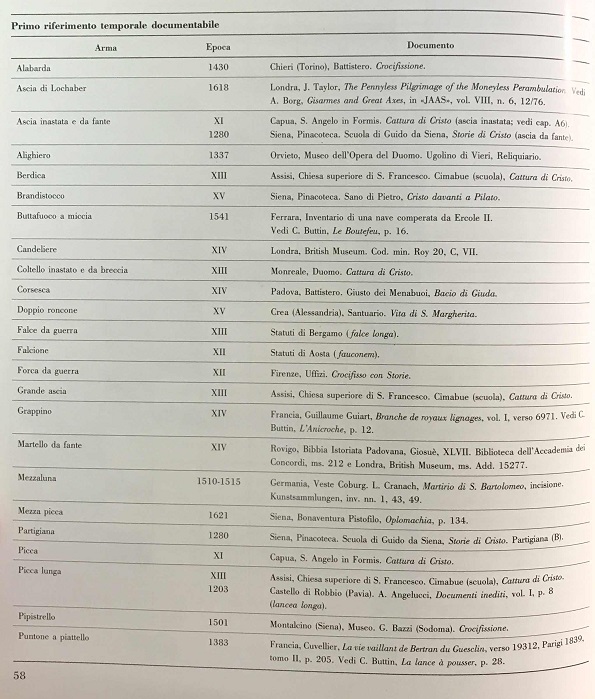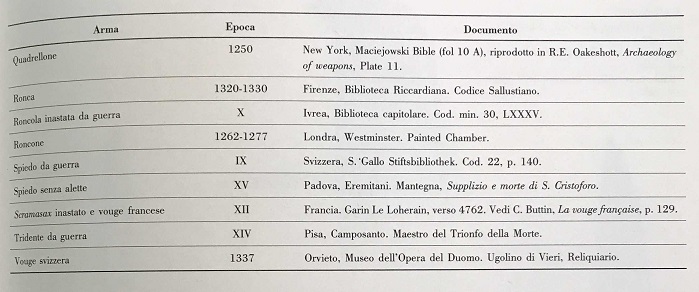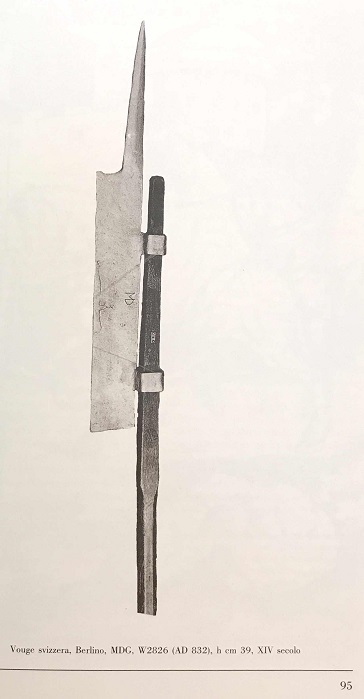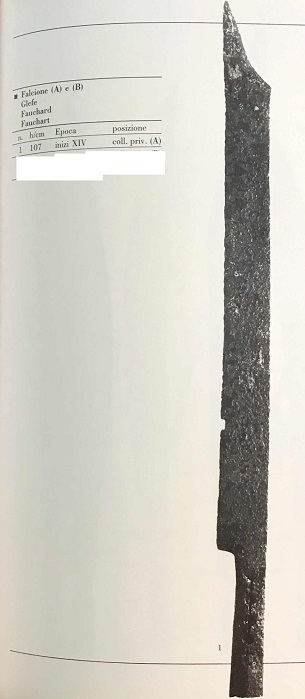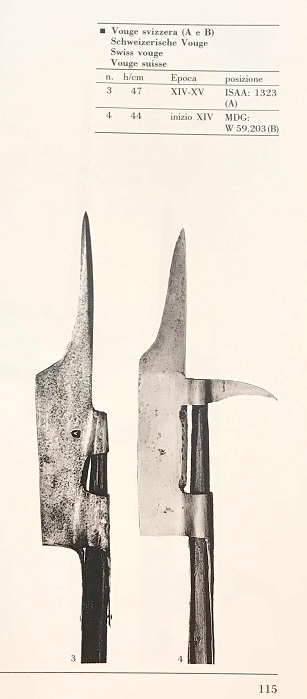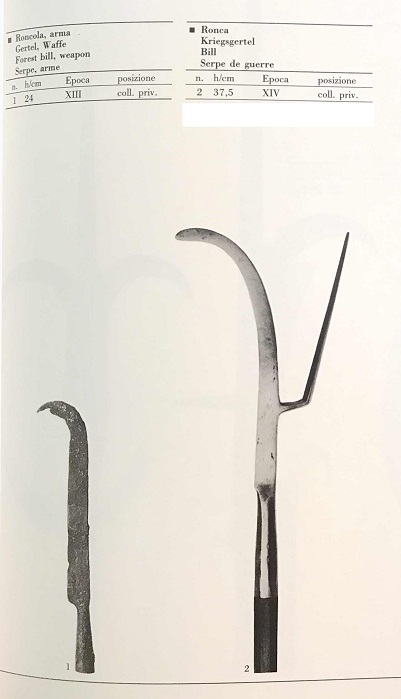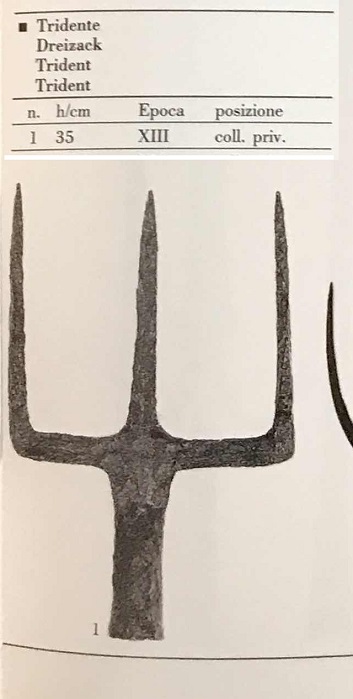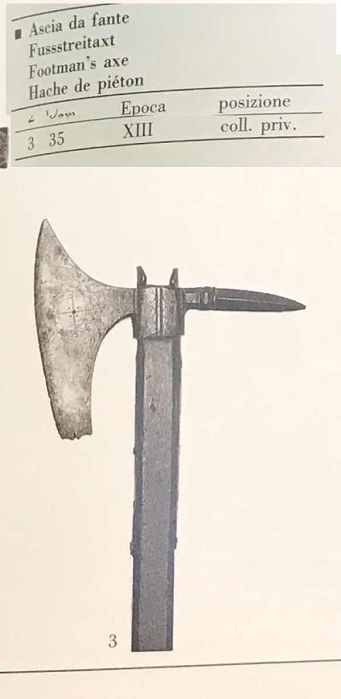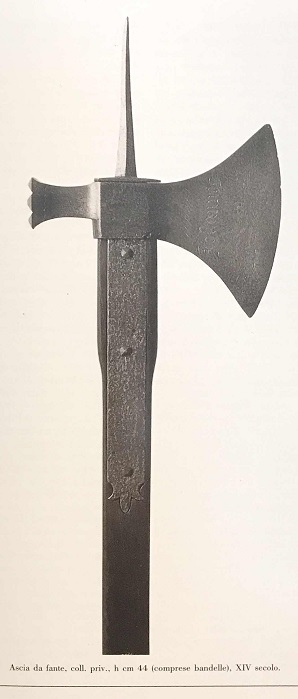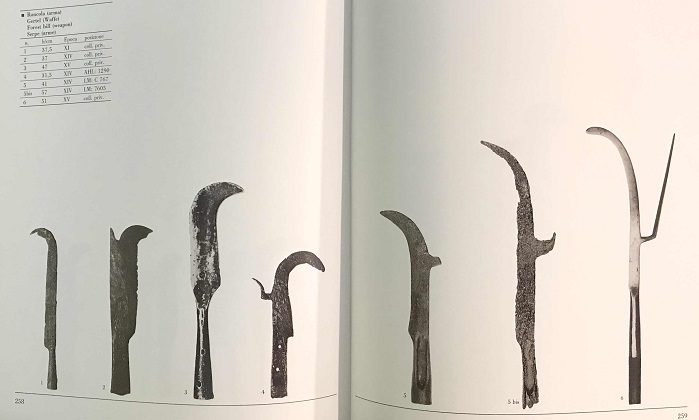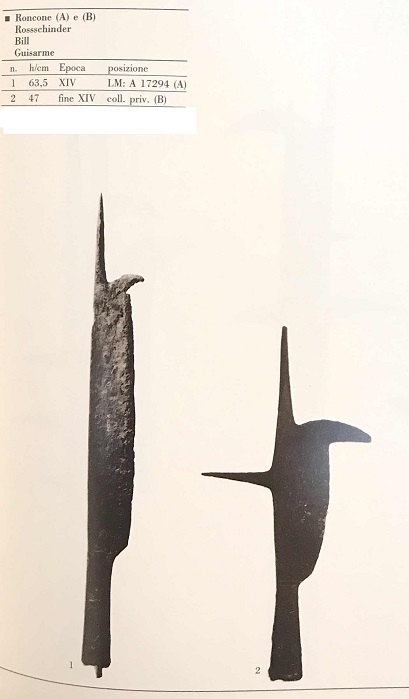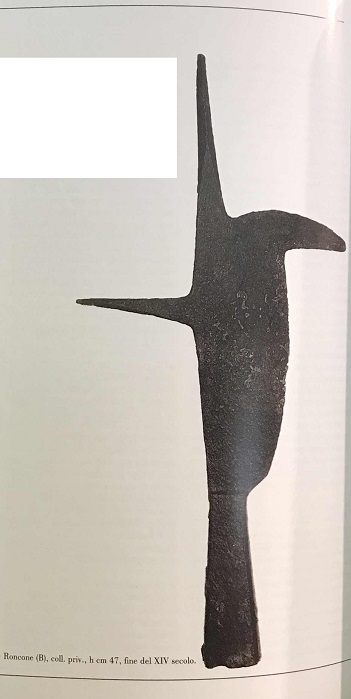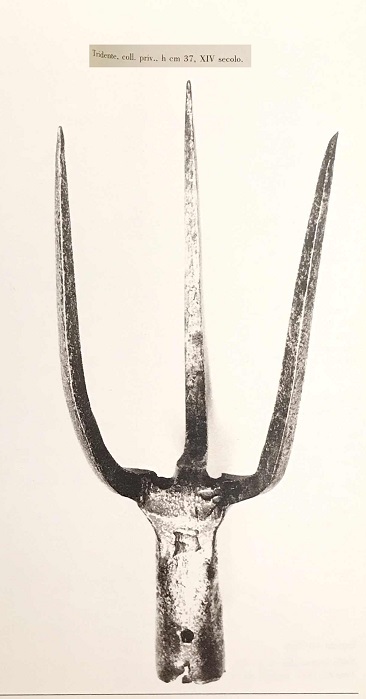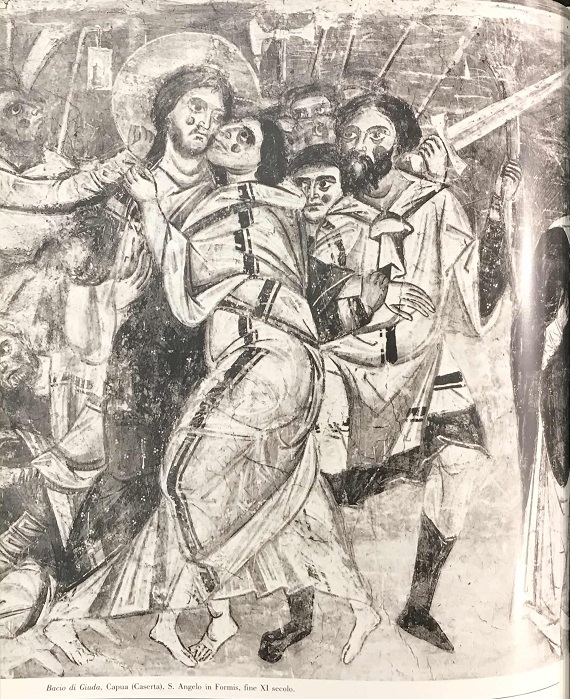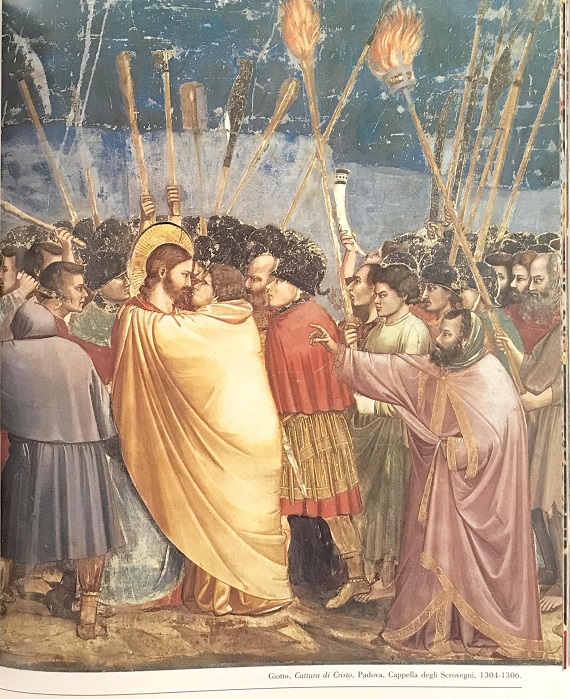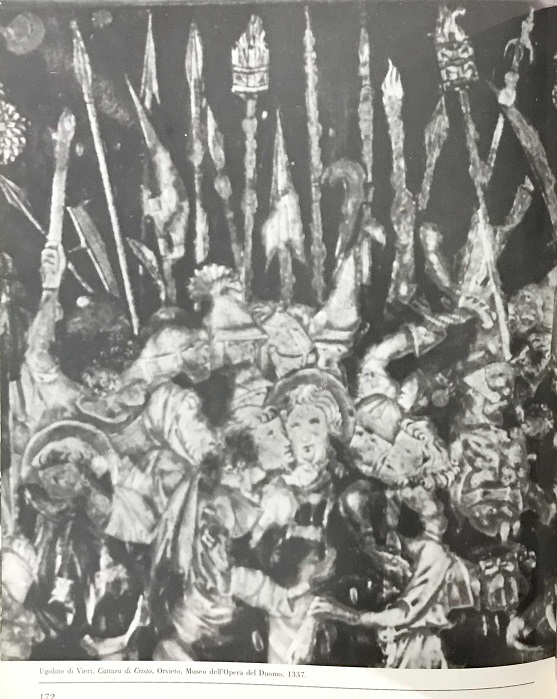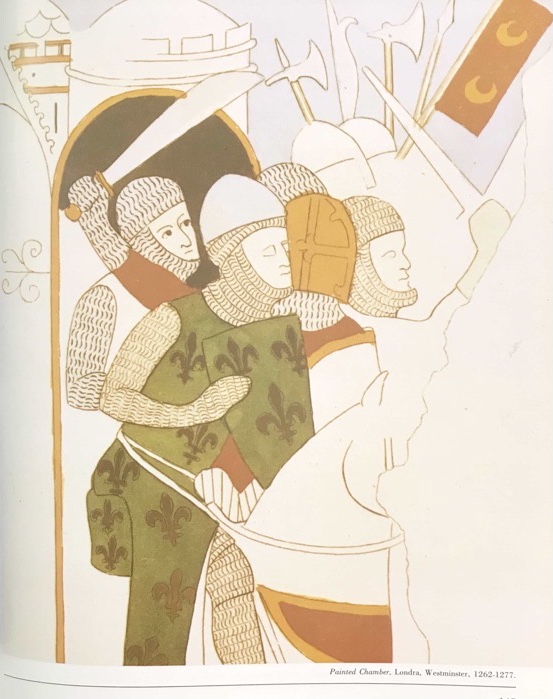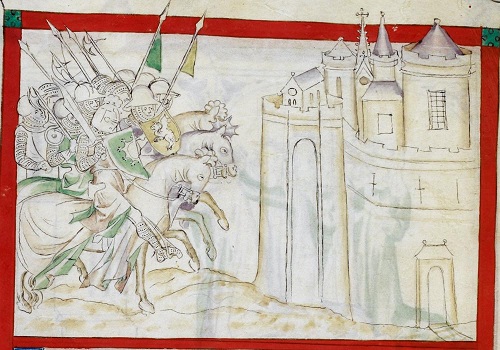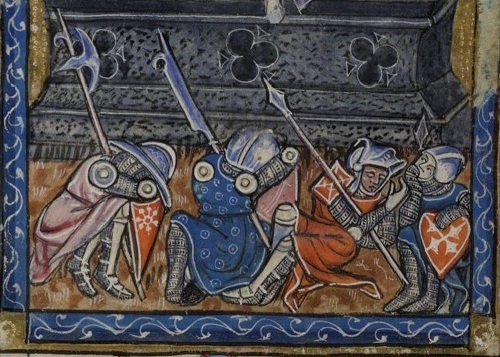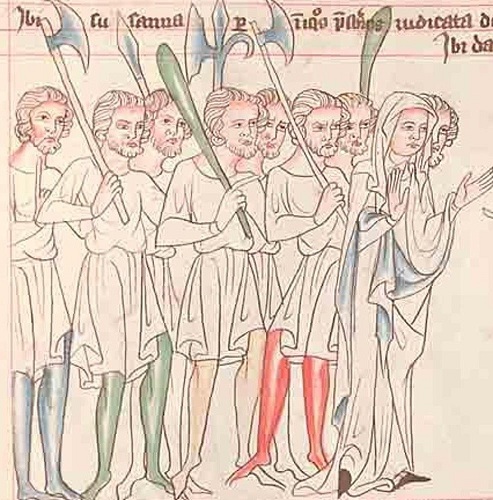If I might be permitted to add to the discussion:
Period art is another area that can provide insight into early polearms. Of course, art has to be handled cautiously because it can sometimes be in a deliberately archaic style, or might exaggerate the appearance of weapons. Nevertheless, it can give some valuable insights into polearms beyond extant artifacts.
During the 11th and 12th centuries, the overwhelming majority of polearms are spears and lances. Miniature after miniature shows knights and infantry carrying them and fighting with them. Weapons other than swords and spears/lances are quite rare. There are a few instances of maces (primarily in Italian miniatures) and a few instances of axes. The latter are seen a bit more frequently in Western European art, including miniatures from France and England. Intriguingly, siege slings—slings attached to a haft and always shown when besieging a castle—are more common in art at this time than polearms which are not spears, lances and axes.
There is only one unambiguous instance in the collection from Manuscript Miniatures of an image depicting some other form of polearm. This is found in the 1136 AD Italian manuscript
BNF NAL 710 Exultet, depicting the betrayal and arrest of Christ. Several soldiers carry weapons which are unambiguously examples of the forest bills seen in Chad's images. There also appears to be various maces, both with flanges and without. My impression is that these may be hafted and similar in length to the spears, making them more analagous to later morning stars. However, their exact length is uncertain, meaning there is insufficient evidence for the morning star claim. Noteworthy are also axes which do not correspond with the appearance of Danish/Viking axes more commonly seen in contemporary illustrations.
There is one other example I have found so far, a rather odd looking axe from the
Morgan M.736 Miscellany on the life of St Edmund . It dates to 1130 AD. However, whether this axe is just an exaggerated depiction of a regular war axe or whether it should be classified as some other form of “polearm” is debatable.
There are two additional points worth drawing attention to. First, from a preliminary investigation of period art, the impression is that only in Italy would one find, very rarely, a polearm that was not a spear or lance during the 11th or 12th centuries. Secondly, it's worth considering the frequency of such polearm depictions. Arguably, they are under-attested in art. Nevertheless, to give a sense of perspective, 1 miniature out of 441 that are dated between 1100 AD and 1200 AD depicts a polearm aside from axes, spears/lances—and in this image, the only other polearms are the forest bills. This means that 0.002% of all 12th century miniatures depict polearms other than axes, spears and lances. To my knowledge, 0% of the 11th century miniatures depict other polearms.
 Attachment: 80.47 KB
Attachment: 80.47 KB

 Attachment: 255.45 KB
Attachment: 255.45 KB
[ Download ]

